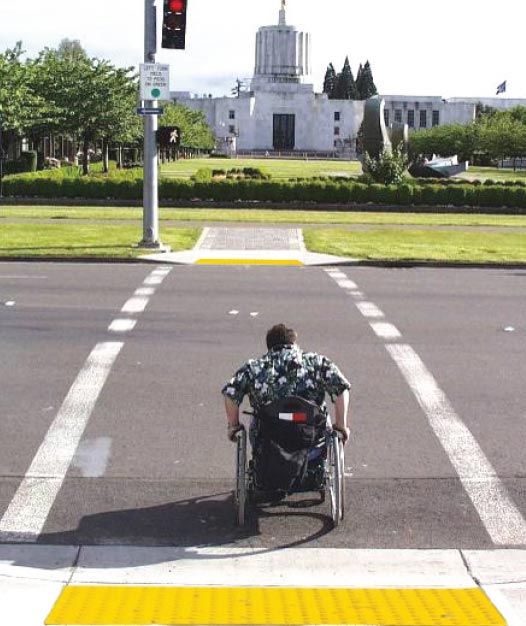 U.S. Department of Transportation
U.S. Department of Transportation
Federal Highway Administration
FHWA-SA-21-032
A leading pedestrian interval (LPI) gives pedestrians the opportunity to enter the crosswalk at an intersection 3-7 seconds before vehicles are given a green indication. Pedestrians can better establish their presence in the crosswalk before vehicles have priority to turn right or left.
LPIs provide the following benefits:
- Increased visibility of crossing pedestrians.
- Reduced conflicts between pedestrians and vehicles.
- Increased likelihood of motorists yielding to pedestrians.
- Enhanced safety for pedestrians who may be slower to start into the intersection.
 An LPI allows a pedestrian to establish a presence in the crosswalk before vehicles are given a green indication. Source: FHWA
An LPI allows a pedestrian to establish a presence in the crosswalk before vehicles are given a green indication. Source: FHWA
FHWA's Handbook for Designing Roadways for the Aging Population recommends the use of the LPI at intersections with high turning vehicle volumes. Transportation agencies should refer to the Manual on Uniform Traffic Control Devices (MUTCD) for guidance on LPI timing and ensure that pedestrian signals are accessible for all users.1 Costs for implementing LPIs are very low when only signal timing alteration is required.
Sources
1. Manual on Uniform Traffic Control Devices (MUTCD), Section 4I.06. FHWA, (2023).
2. (CMF ID: 9918) Goughnour, E., D. Carter, C. Lyon, B. Persaud, B. Lan, P. Chun, I. Hamilton, and K. Signor. "Safety Evaluation of Protected Left-Turn Phasing and Leading Pedestrian Intervals on Pedestrian Safety." Report No. FHWA-HRT-18-044. Federal Highway Administration. (October 2018)

